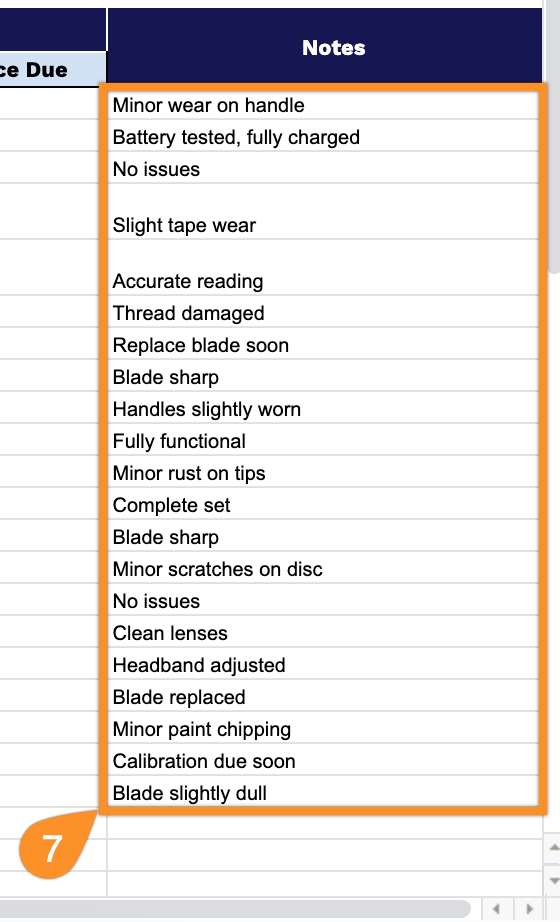Most of us have been there: searching through toolboxes and storage areas for that one tool we know we have somewhere.
Whether you’re managing equipment across job sites, organizing a workshop, or just trying to keep your garage in order, knowing what tools you have and where they are saves time, money, and frustration.
Our free spreadsheet template works with Google Sheets, Excel, or as a printable PDF.
Quick Jump
ToggleWhat Is a Tool Inventory Spreadsheet?
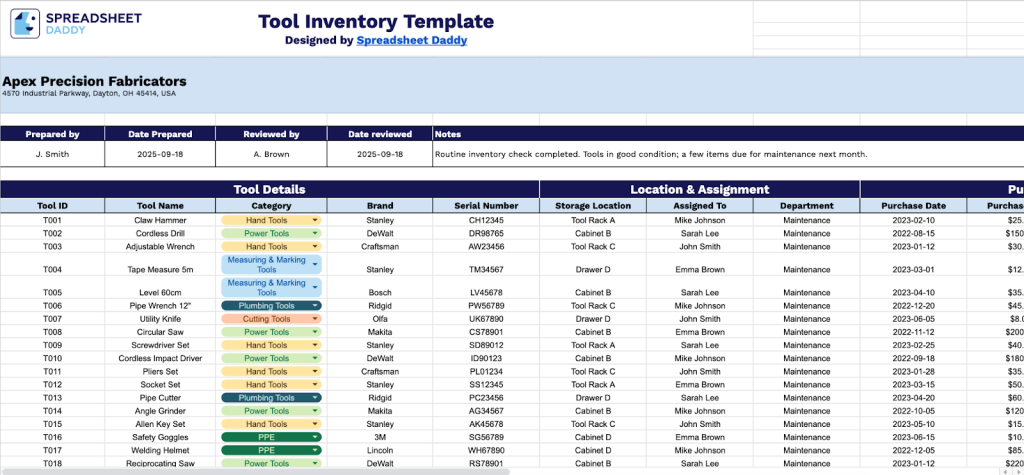
A tool inventory spreadsheet is a digital document used to track and manage all tools and equipment owned by a business, organization, or individual. It typically includes details such as tool names, descriptions, serial numbers, purchase dates, current locations, and maintenance schedules.
This organized system helps prevent tool loss, ensures proper Maintenance, and streamlines equipment management for improved operational efficiency.
Why Use Our Tool Inventory Spreadsheet Template?
- Eliminate costly tool losses and misplacement: Track exactly where every tool is located and who it’s assigned to, preventing expensive replacements and project delays caused by missing equipment.
- Maximize tool lifespan and performance by staying on top of maintenance schedules and condition monitoring to catch issues early, thereby extending equipment life and avoiding unexpected breakdowns that disrupt operations.
- Streamline procurement and budgeting decisions: Access complete purchase history, supplier contacts, and current inventory levels in one place to make informed buying decisions and avoid duplicate purchases.
- Ensure workplace safety and compliance: Maintain detailed inspection records and condition tracking to meet safety regulations and prevent accidents caused by faulty or poorly maintained tools.
- Get organized instantly with zero learning curve: This free, comprehensive template includes all essential tracking categories pre-configured, so you can start managing your tool inventory immediately without complex setup or training.
Download Spreadsheet Daddy’s Free Tool Inventory Management Spreadsheet

Our tool inventory template helps organizations keep track of all their tools and equipment in one organized place.
It makes it easy to stay on top of maintenance schedules and ensures tools are properly managed throughout their lifecycle.
What’s included
- Complete tool tracking setup: The template gives you a clean, organized way to record all your tools with basic company info at the top and a straightforward table below. Each tool gets its own ID, name, category, brand, and serial number so you can easily keep track of everything in your shop or warehouse.
- Location and assignment tracking: Simple columns let you note where each tool is stored and who’s currently using it. This makes it easy to find tools when you need them and know who to ask if something goes missing.
- Purchase and supplier information: Keep track of when you bought each tool, what you paid for it, and who you purchased it from. This comes in handy for warranty issues, reordering parts, or planning your tool budget for next year.
- Maintenance and condition records: The template helps you stay on top of how many tools you have, what shape they’re in, when they were last checked, and when they need their next service. This prevents surprises and keeps your tools working properly.
How to Use Our Tool Inventory Spreadsheet Template
1. To use the template, you can either make a copy of the Google Sheets file or download it as an Excel or PDF.
2. For your tool inventory template, include your store’s name and location, along with the inventory coordinator’s information and when they finished the count. Make sure to add the supervising manager’s name and the date they reviewed everything. Use the notes area to jot down any significant findings or observations from the inventory process.

3. Complete the Tool Details section by entering all essential equipment information:
- Tool ID: Enter the unique identifier or asset tag assigned to each tool for inventory tracking purposes.
- Tool Name: Specify the complete product name and model description of the equipment.
- Category: Select the appropriate tool classification (hand tools, power tools, cutting tools, PPE, etc.).
- Brand: Include the manufacturer or brand name associated with the tool.
- Serial Number: Record the manufacturer’s serial number for warranty claims and theft prevention.
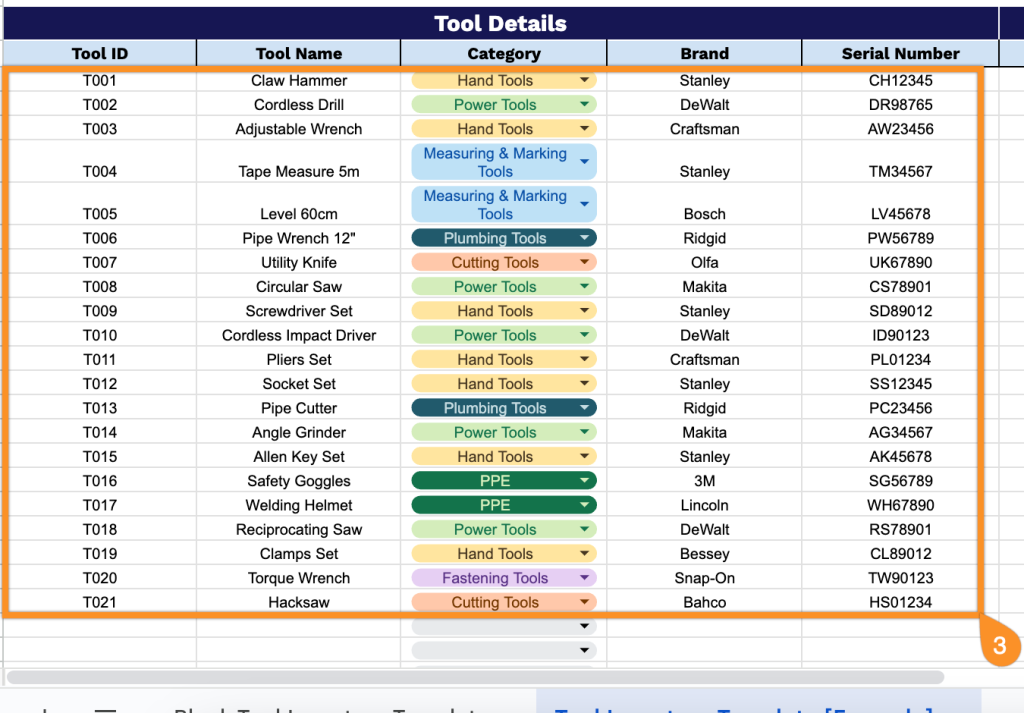
4. Document storage and responsibility details in the Location & Assignment section for accountability:
- Storage Location: Specify the designated area, room, or toolbox where the item is housed.
- Assigned To: Enter the name of the employee or team responsible for the tool’s custody.
- Department: Identify which organizational unit or work area utilizes the equipment.
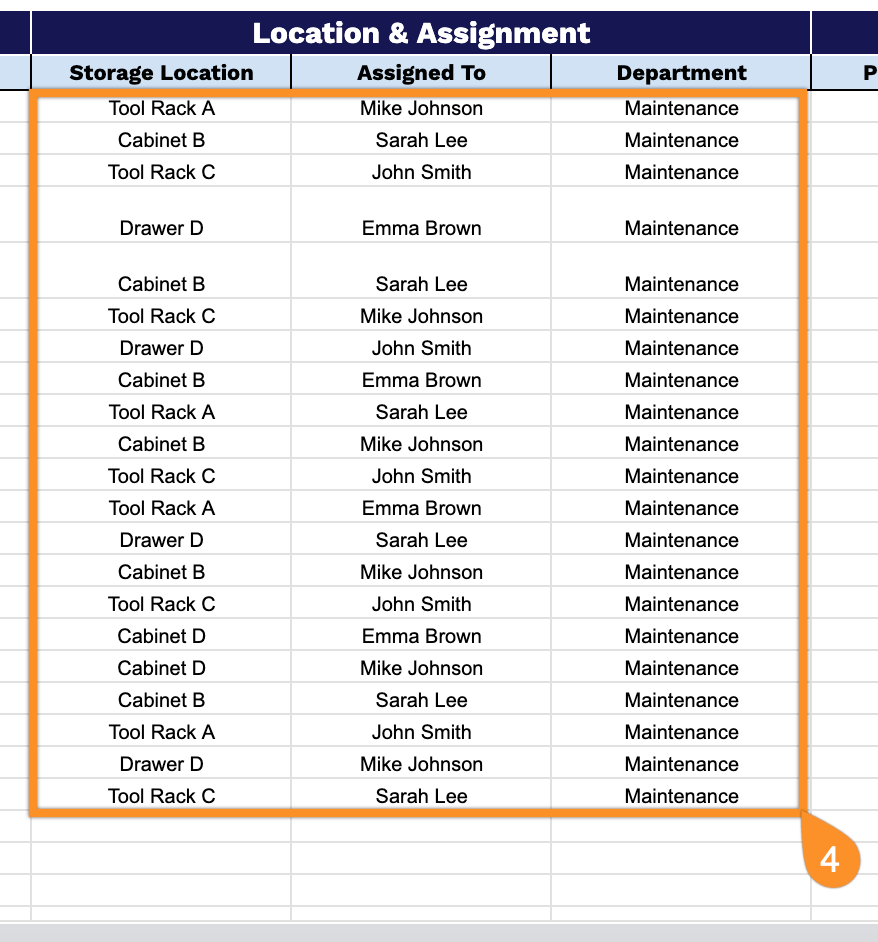
5. Track financial and procurement data in the Purchase & Supplier Info section for budget management:
- Purchase Date: Record when the tool was acquired for warranty and depreciation tracking.
- Purchase Price: Document the original cost paid for the item for asset valuation purposes.
- Supplier: Enter the name of the vendor or retailer from whom the tool was purchased.
- Contact Info: Include phone numbers, email addresses, and key contact persons for reordering or service.
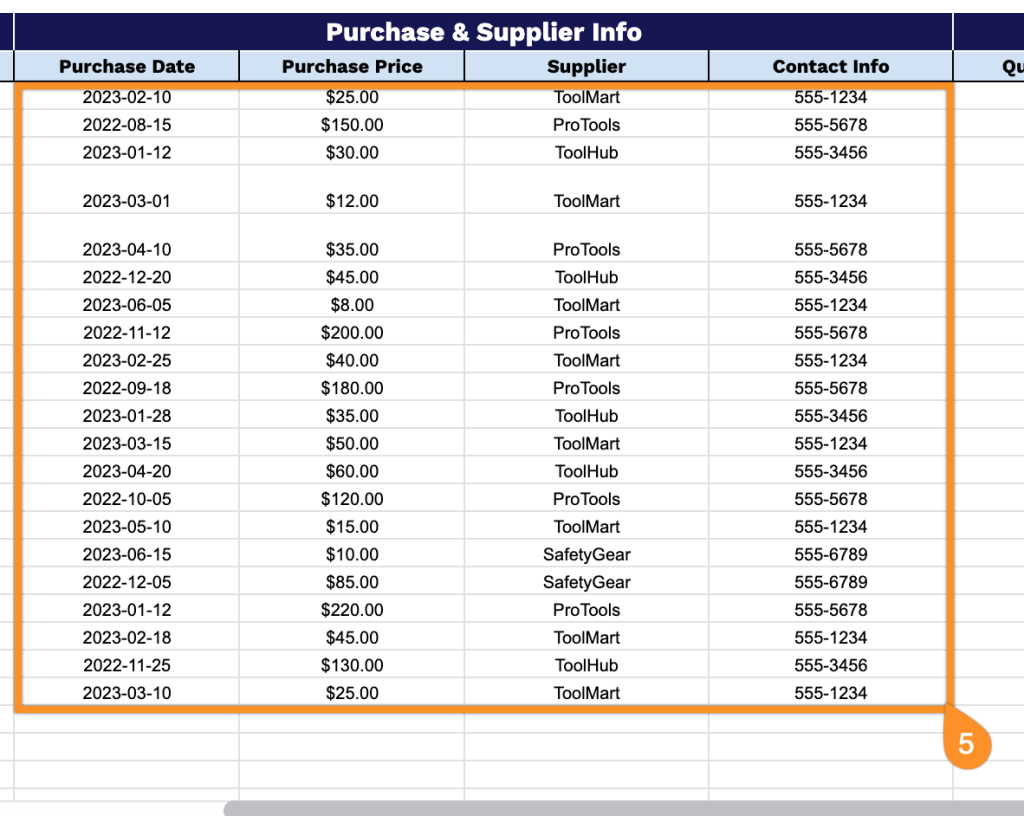
6. Monitor stock levels and maintenance status in the Inventory & Condition Tracking section for operational efficiency:
- Quantity on Hand: Document the current number of units available for immediate use.
- Condition: Assess and record the current state of the tool (new, good, damaged, needs repair, etc.).
- Last Inspection Date: Record the date the equipment was most recently inspected for safety and functionality.
- Next Maintenance Due: Schedule upcoming service, calibration, or replacement requirements to prevent downtime.
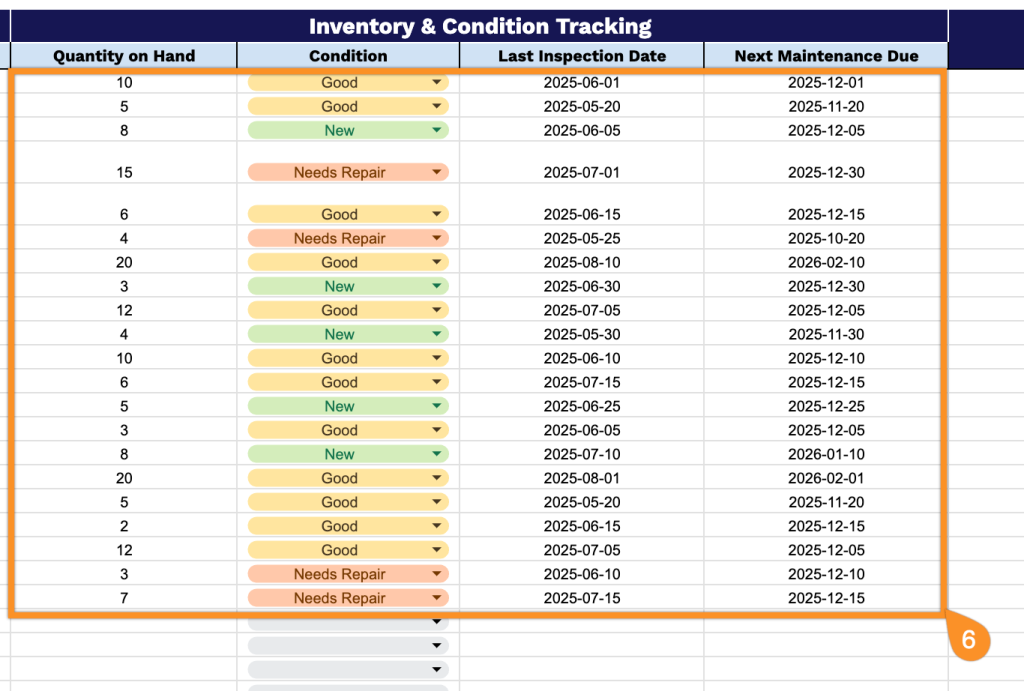
7. Add any relevant additional information in the Notes section.
